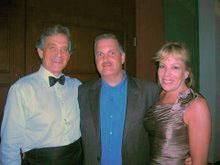Business Email Etiquette
As so many of us live and do business in cyberspace, we find that often communication is conducted by personal meeting, phone or letter less and by email. Of all Internet activities, email is the most popular. Almost 88 percent of all Internet users in the U.S. use email. This information comes from a survey conducted by the UCLA Center for Communication Policy (The UCLA Internet Report: Surveying the Digital Future. UCLA Center for Communication Policy. 2001). According to the same survey, approximately 90 percent of those who use the Internet at work use it to access business email.
With that in mind, here are some tips to use when writing a business email.
Be concise and to the point.
Do not make e-mail longer than it needs to be. Remember that reading e-mail is harder than reading printed communications and a long e-mail can be very discouraging to read.
Use proper spelling, grammar & punctuation.
This is not only important because improper spelling, grammar and punctuation give a bad impression of your company, it is also important for conveying the message properly. E-mails with no full stops or commas are difficult to read and can sometimes even change the meaning of the text. Hello, this is why you have spell check.
Do not write in all CAPITALS
IF YOU WRITE IN CAPITAL LETTERS IT MEANS THAT YOU ARE SHOUTING! This is not only highly annoying but can trigger an unwanted response.
Answer as soon as you can
Client’s s send e-mail because they wish to receive a quick response. If they did not want a quick response they would send a letter or a fax. Therefore, each e-mail should be replied to within at least 24 hours, and preferably within the same working day. If the email is complicated, just send an email back saying that you have received it and that you will get back to them. This will put the customer's mind at rest and usually customers will then be very patient!
Do not attach unnecessary files.
By sending large attachments you can annoy customers and even bring down their e-mail system. Wherever possible try to compress attachments and only send attachments when they are productive. . I used to live up in the mountains where we only had dial up connection and sometimes even a few large photos could crash my system for hours.
Use proper structure & layout.
Since reading from a screen is more difficult than reading from paper, the structure and lay out is very important for e-mail messages. Use short paragraphs and blank lines between each paragraph. When making points, number them or mark each point as separate to keep the overview.
Read the email before you send it.
A lot of people don't bother to read an email before they send it out, as can be seen from the many spelling and grammar mistakes contained in emails. Apart from this, reading your email through the eyes of the recipient will help you send a more effective message and avoid misunderstandings and inappropriate comments.
Take care with abbreviations and emoticons.
In business emails, try not to use abbreviations such as BTW (by the way) and LOL (laugh out loud). The recipient might not be aware of the meanings of the abbreviations and in business emails these are generally not appropriate. The same goes for emoticons, such as the smiley :-). Would you sign a business latter with a smiley face? I think not. The same should go for an email to a client.
Helping You Find Peace and Prosperity
David Carroll
952-544-0117
www.thehomebusinesscompany.com
Sunday, February 10, 2008
Subscribe to:
Post Comments (Atom)



No comments:
Post a Comment